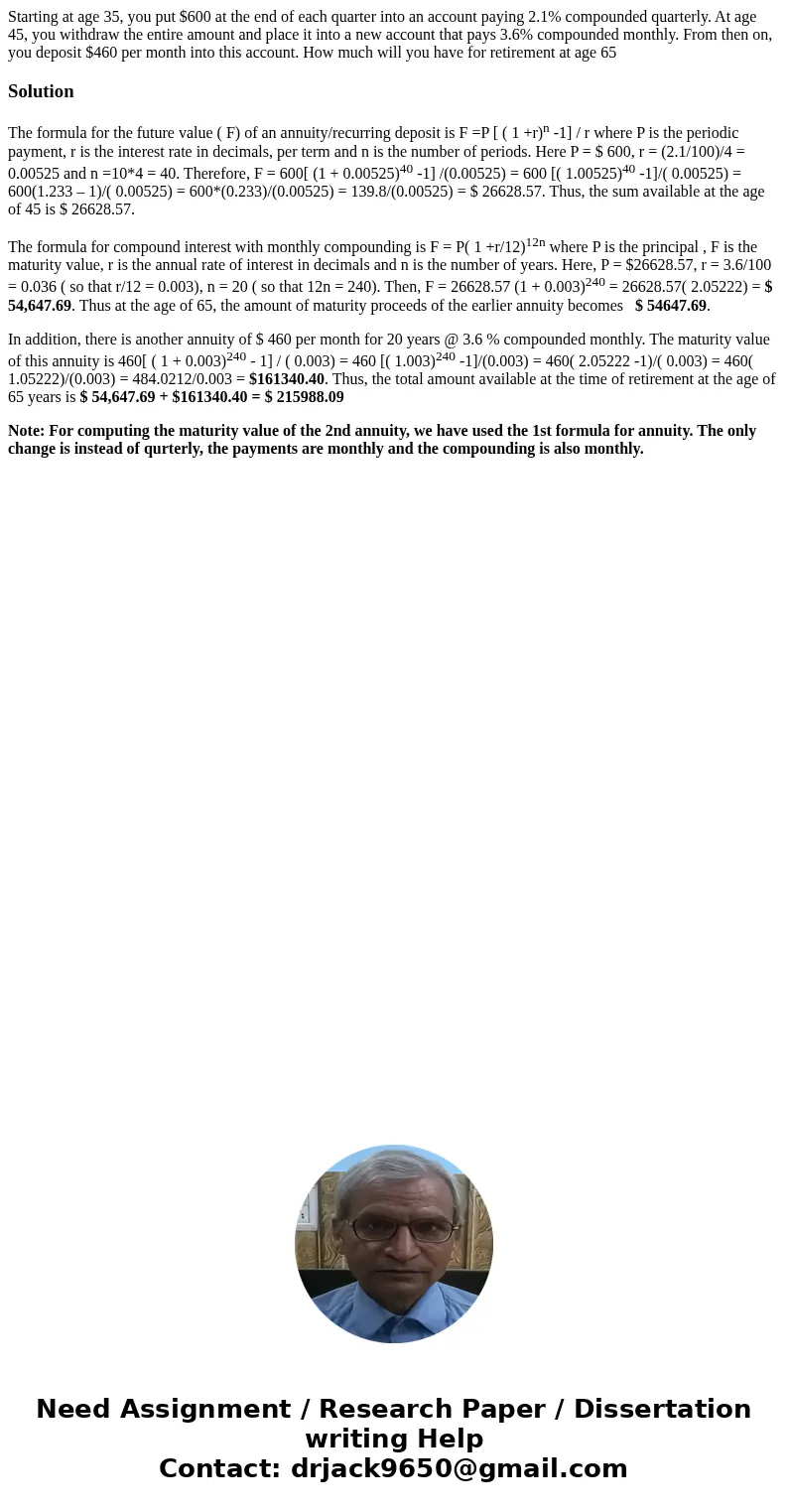Starting at age 35 you put 600 at the end of each quarter in
Solution
The formula for the future value ( F) of an annuity/recurring deposit is F =P [ ( 1 +r)n -1] / r where P is the periodic payment, r is the interest rate in decimals, per term and n is the number of periods. Here P = $ 600, r = (2.1/100)/4 = 0.00525 and n =10*4 = 40. Therefore, F = 600[ (1 + 0.00525)40 -1] /(0.00525) = 600 [( 1.00525)40 -1]/( 0.00525) = 600(1.233 – 1)/( 0.00525) = 600*(0.233)/(0.00525) = 139.8/(0.00525) = $ 26628.57. Thus, the sum available at the age of 45 is $ 26628.57.
The formula for compound interest with monthly compounding is F = P( 1 +r/12)12n where P is the principal , F is the maturity value, r is the annual rate of interest in decimals and n is the number of years. Here, P = $26628.57, r = 3.6/100 = 0.036 ( so that r/12 = 0.003), n = 20 ( so that 12n = 240). Then, F = 26628.57 (1 + 0.003)240 = 26628.57( 2.05222) = $ 54,647.69. Thus at the age of 65, the amount of maturity proceeds of the earlier annuity becomes $ 54647.69.
In addition, there is another annuity of $ 460 per month for 20 years @ 3.6 % compounded monthly. The maturity value of this annuity is 460[ ( 1 + 0.003)240 - 1] / ( 0.003) = 460 [( 1.003)240 -1]/(0.003) = 460( 2.05222 -1)/( 0.003) = 460( 1.05222)/(0.003) = 484.0212/0.003 = $161340.40. Thus, the total amount available at the time of retirement at the age of 65 years is $ 54,647.69 + $161340.40 = $ 215988.09
Note: For computing the maturity value of the 2nd annuity, we have used the 1st formula for annuity. The only change is instead of qurterly, the payments are monthly and the compounding is also monthly.

 Homework Sourse
Homework Sourse